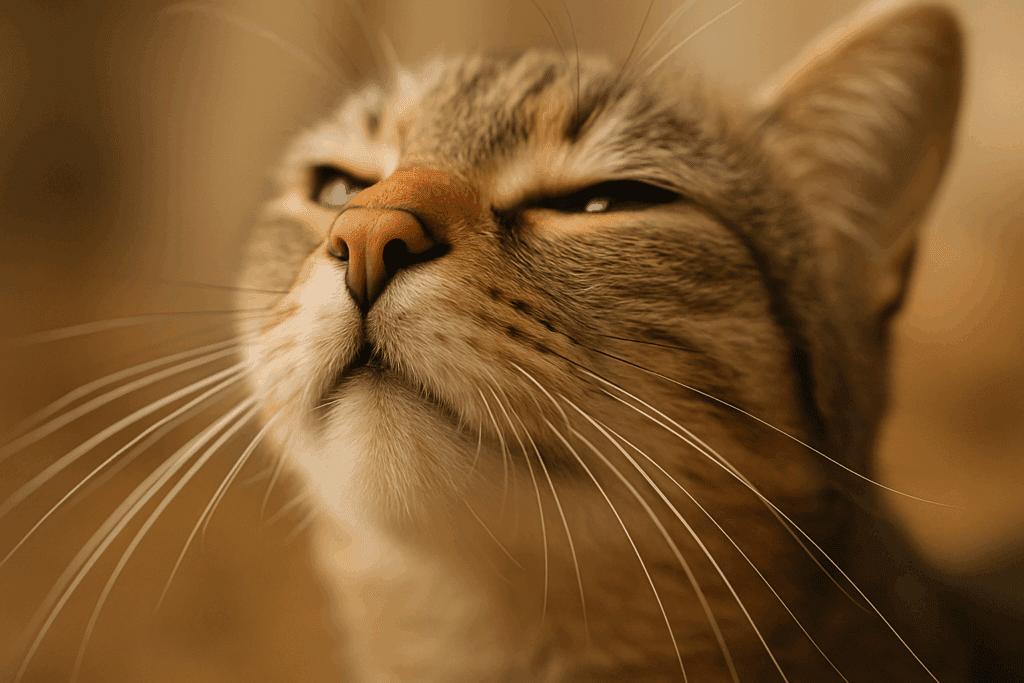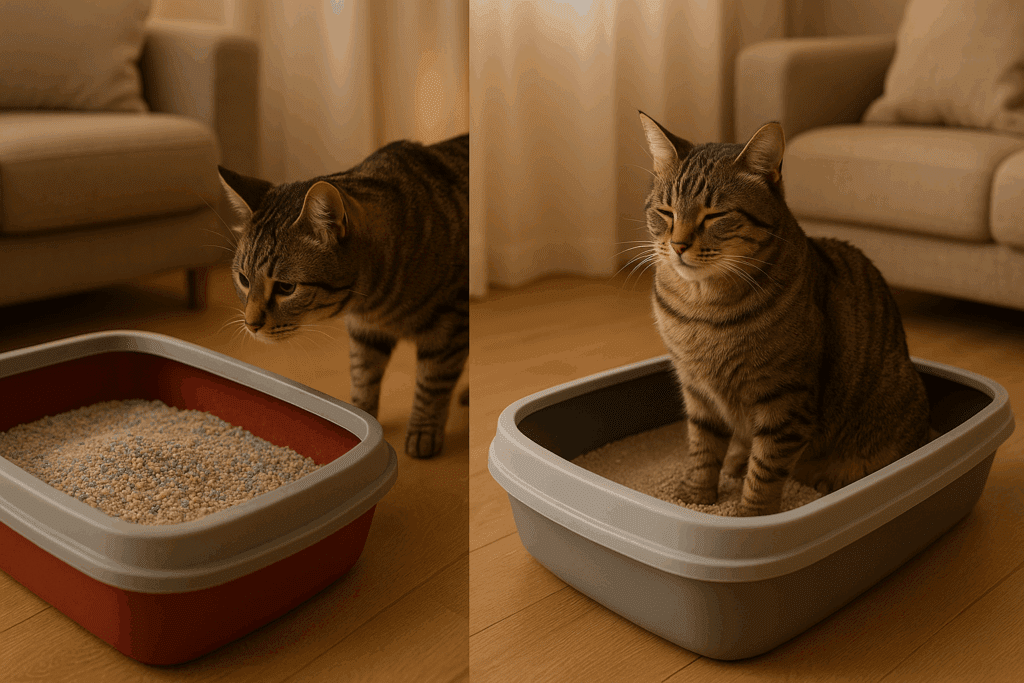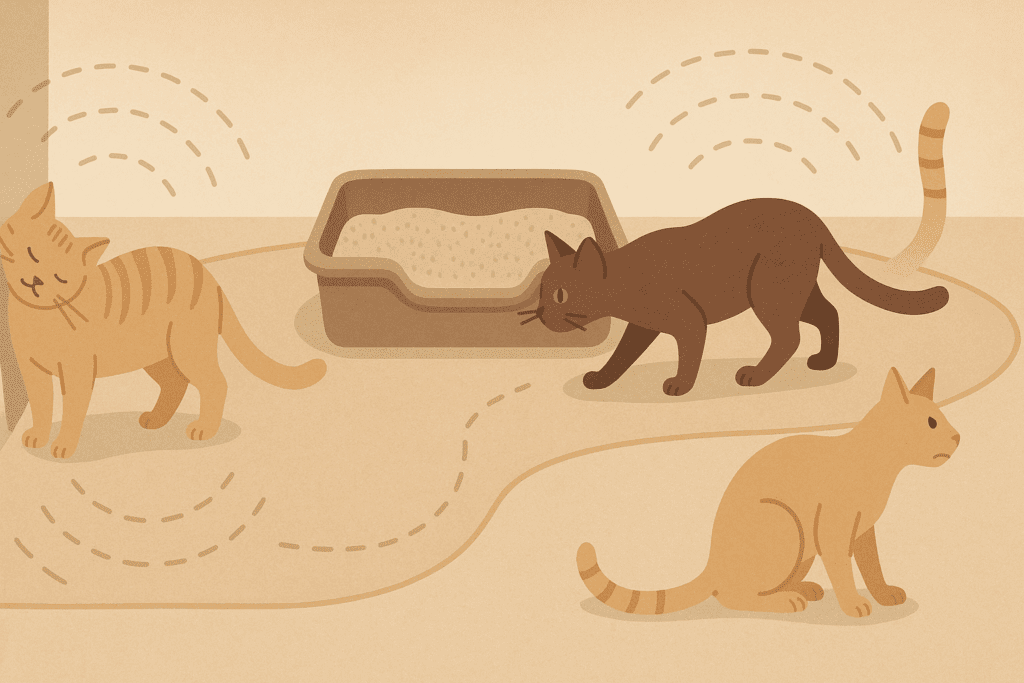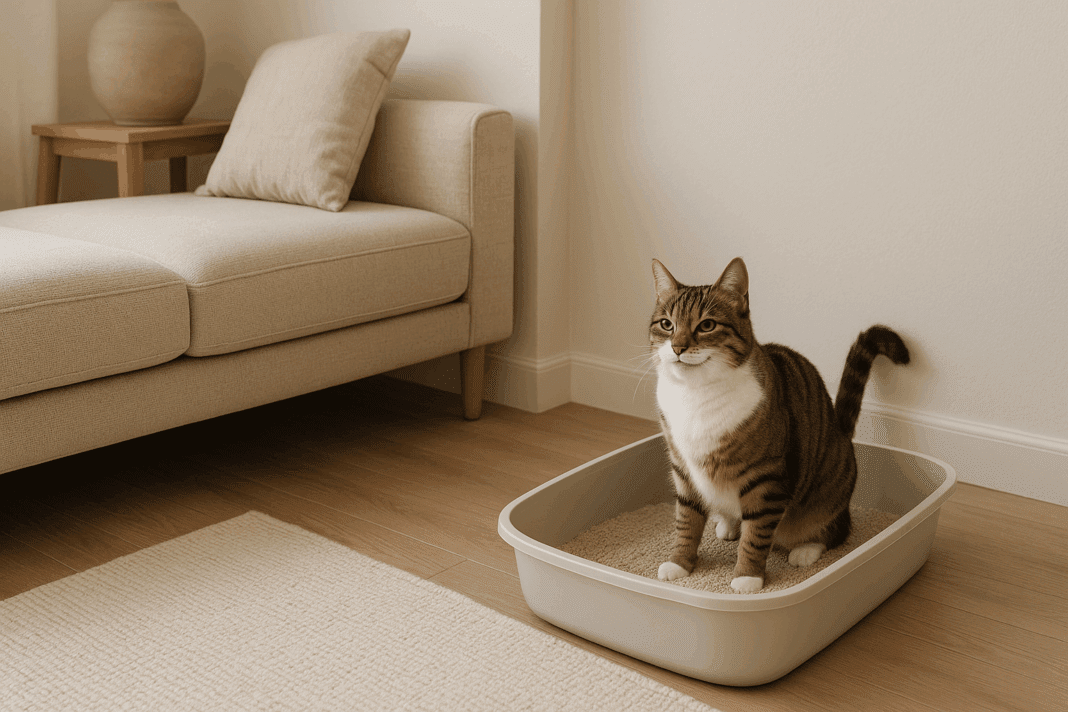Scented litter might be causing your cat to avoid the litter box altogether. We’ll delve into how artificial fragrances interfere with a cat’s natural instincts, leading to litter box aversion and stress. Dr. Elsey’s expert insights reveal how its specially formulated unscented litters offer a stress-free solution, ensuring a comfortable and odorless space for your feline companion.
For many cat owners, a feline’s refusal to use the litter box can be a frustrating and perplexing challenge. Cats are typically fastidious animals, and when they avoid the litter box, it’s a sign that something in their environment—or their health—is off. Whether it’s a medical issue, stress, or a preference for a different type of litter, inappropriate elimination can quickly become a major concern. Understanding why your cat might be avoiding the litter box is crucial for finding the right solution.

Sensitivity to Scents
One of the first things to recognize about cats is that their sense of smell is far more acute than that of humans. Cats rely heavily on their olfactory systems to navigate their environment, mark territory, and communicate with others. This sensitivity to scents means that strong or unfamiliar odors around the litter box can influence a cat’s willingness to use it. Whether it’s the scent of the litter itself, cleaning products, or air fresheners, a smell that seems harmless to us might be overwhelming for a cat.

The Impact of Scented Litter on Your Cat’s Health
Many cat litter products on the market today are scented to mask waste odor. While this may seem like a great solution for controlling unpleasant smells in your home, scented litter can be harmful to your cat.
Scented cat litters often contain chemicals that can irritate a cat’s respiratory system. Prolonged exposure to scented litter can lead to sneezing, coughing, and even more serious conditions like feline asthma. Cats with pre-existing respiratory issues are particularly vulnerable to these problems, but even healthy cats can develop symptoms over time.
Furthermore, cats may avoid a scented litter box altogether if the smell is too strong. Cats prefer a space that feels safe and natural, and an overpowering scent can deter them from using their litter box. As such, many cats prefer unscented litter, which more closely mimics the natural conditions they seek out when relieving themselves.
The Importance of Unscented and Low-Dust Litter
For concerned pet owners, using unscented, low-dust litter is a critical step in providing a safe and comfortable environment for their cats. Dr. Elsey’s, a well-respected name in feline health products, has long advocated using dust-free, unscented litter. Its products are designed to prioritize cat health by avoiding harmful additives and chemicals that can exacerbate respiratory issues.
According to Dr. Elsey’s research, scented litter contributes to a range of health problems in cats, including:
Respiratory Irritation:
Scented litter can irritate a cat’s nasal passages and lungs, leading to sneezing, coughing, and respiratory discomfort.
Feline Asthma:
Cats with asthma are especially susceptible to attacks triggered by scented litter, as the chemicals in the fragrances can exacerbate their condition.
Allergic Reactions:
Cats, like humans, can develop allergies to the fragrances in a scented litter, leading to symptoms like excessive grooming, skin rashes, or avoidance of the litter box.
By opting for unscented and low-dust litters, cat owners can help minimize the risk of respiratory issues while maintaining a clean, odor-free environment for their cats and themselves.
The Role of Household Scents and Cleaning Products
In addition to the litter itself, the cleaning products used around the litter box area can significantly impact a cat’s behavior. Many household cleaners, air fresheners, and disinfectants contain chemicals such as ammonia, bleach, and artificial fragrances. These compounds can be particularly irritating to a cat’s sensitive nose.
The American Society for the Prevention of Cruelty to Animals (ASPCA) warns that common household cleaners can cause respiratory irritation and other health issues in cats. Ammonia-based cleaners, in particular, can mimic the smell of urine, confusing your cat and potentially leading to marking behavior in inappropriate areas of the home.
To avoid overwhelming your cat with strong odors, it’s best to clean the litter box with mild, unscented products like diluted vinegar. Not only is vinegar effective at neutralizing odors, but it is also free from harsh chemicals that might deter your cat from using the litter box.

Multi-Cat Households and the Role of Scent Marking
If you have more than one cat, territoriality and scent marking can further complicate litter box usage. Cats are territorial animals, and in a multi-cat household, they use scent to establish dominance and boundaries. A shared litter box can quickly become saturated with the scents of other cats, leading to avoidance if a particular cat feels uncomfortable using a box that smells like another cat’s territory.
The Cat Fanciers’ Association recommends providing at least one litter box per cat, plus one extra, to prevent territorial disputes. For multi-cat households, products like Cat Attract, developed by Dr. Elsey’s, can be particularly helpful. Cat Attract is formulated with a natural herbal attractant that draws cats to the litter box without overwhelming their senses. This makes it ideal for solving litter box issues in households with multiple cats.
Medical Issues and Litter Box Avoidance
While environmental factors like scents and cleanliness play a significant role in litter box aversion, it’s important not to overlook potential medical causes. Suppose your cat suddenly stops using the litter box. In that case, it’s essential to rule out health problems such as urinary tract infections (UTIs), bladder stones, or feline lower urinary tract disease (FLUTD). Pain or discomfort while relieving themselves can cause a cat to associate the litter box with negative experiences, leading them to avoid it.
Consulting a veterinarian is crucial if you suspect a medical issue is behind your cat’s litter box aversion. Once health concerns are ruled out, you can focus on adjusting environmental factors to encourage proper litter box use.
Behavioral Factors and Substrate Preferences
Cats can also develop preferences for certain types of litter or substrates. If your cat has begun eliminating on soft surfaces like carpets or bedding, they may have developed a preference for that texture. In this case, switching to a softer, unscented litter might help encourage them to return to the litter box.
Additionally, the size and location of the litter box can affect whether a cat uses it. Cats generally prefer a quiet, low-traffic area where they feel safe. A cramped or noisy space near appliances like washing machines or refrigerators may make your cat reluctant to use the box. Providing an appropriately sized, easy-to-access litter box in a calm environment can make a significant difference.
How to Encourage Proper Litter Box Use
Preventing litter box aversion often requires a comprehensive approach that addresses scents, cleanliness, and any underlying behavioral or medical factors. Here are some tips to help solve litter box issues:
Use Unscented Litter:
Cats are sensitive to strong scents, so opting for an unscented litter can help make the litter box more inviting.
Keep the Litter Box Clean:
Regularly scoop the litter box and change the litter to prevent odors and waste buildup.
Provide Multiple Litter Boxes:
In multi-cat households, ensure that there is one litter box per cat, plus one extra.
Consider Certain Natural Products:
If your cat refuses to use the litter box, a product like Cat Attract from Dr. Elsey’s may help draw them back with its natural herbal attractant.
Conclusion
Litter box aversion is a complex issue that can arise from various factors, including health, behavior, and environmental influences like scent. By understanding the sensitivity of a cat’s olfactory system and addressing potential irritants—such as scented litter, household cleaners, or air fresheners—cat owners can create a more comfortable and welcoming environment for their feline companions. With the right approach, coupled with using unscented, low-dust litter and products, most litter box issues can be resolved, ensuring a happier, healthier life for you and your cat.
Further Reading:
1. “Common feline problem behaviours: Unacceptable indoor elimination” – Journal of Feline Medicine and Surgery
2. “Feline litter box issues associate with cat personality, breed, and age at sterilization” – Journal of the American Veterinary Medical Association
3. “Effect of an odor eliminator on feline litter box behavior” – Sage Journals



